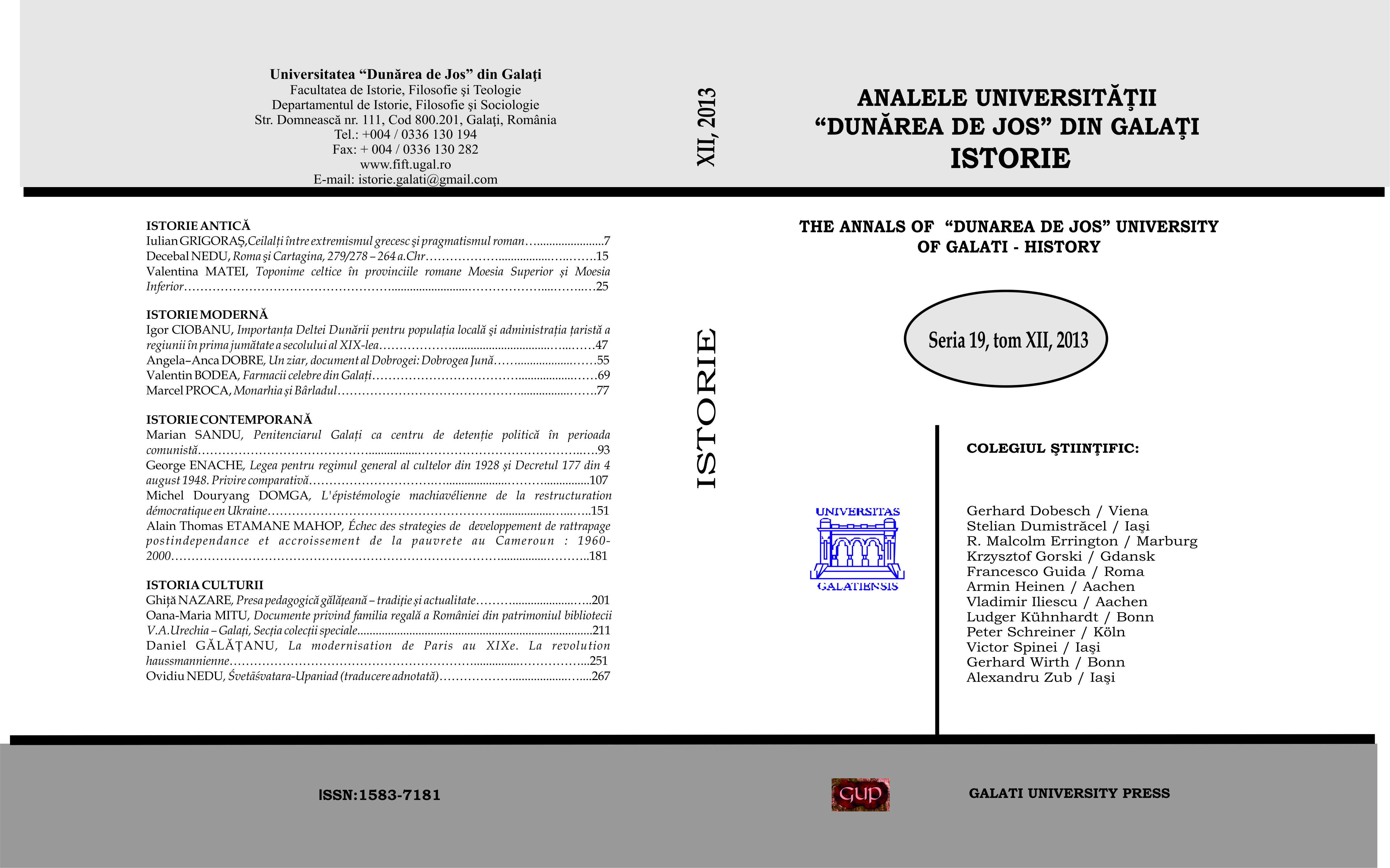ŚVETĀŚVATARA-UPANISAD
(TRADUCERE ADNOTATĂ)
Śvetāśvatara-Upanisad (Annotated Translation)
Author(s): Ovidiu Cristian NeduSubject(s): History, Language and Literature Studies, Theology and Religion
Published by: Galaţi University Press
Keywords: Indian religion; Brahmanism; Svetasvatara - Upanisad; metaphysics; Brahman; Purusa; Samkhya; theism; Yoga
Summary/Abstract: Śvetāśvatara Upanisad is a more recent classical Upanisad, belonging to the line of Krsna Yajur-Veda. Nevertheless, the text has always been regarded as one of high authority, being commented upon even by important authors, such as Śakara.Śvetāśvatara is famous for its brief but clear approach of the ultimate reality (Brahman), being one of the outstanding texts of this kind. Brahman is depicted under all its major aspects, generally found in the Upanisads: as fundamental reality, the Self of all individual beings, the primordial being (Purua), the realm of liberation, the ultimate subject, the principle of the world-cycle (brahmacakra).Several verses also discuss on the Universe, generally on the basis of some Sākhya categories.The whole text is imbued with a strong theistic feeling, much more visible than in case of most other Upaniads. Of a special interest are verses III.1-III.6, which identify the ultimate reality with the Vedic god Rudra, a violent and frightening deity. In order to “tame” him, the text calls him “siva” (“kind”, “benefic”) and, along time, the god Rudra would be known by the name “Śiva”. The text includes several other archaic elements, inherited from the Vedic tradition, such as verses II.1-II.7, where the ancient cult of the Sun is reinterpreted as a metaphor for the realization of Brahman.Much attention have received the Sāmkhya influences scattered in various parts of the text. There are some verses which make use of Sākhya categorical divisions or which speak in Sākhya terms, such as Īvara, Pradhāna, Prakti. Some classical ideas of Sākhya, such as the theory of the three “qualities” (guna) of manifestation and maybe even its dualism could be, at last, traced in Śvetāśvatara Upanisad
Journal: Analele Universităţii Dunărea de Jos din Galaţi. Seria Istorie
- Issue Year: 2013
- Issue No: 12
- Page Range: 251-300
- Page Count: 50
- Language: Romanian

